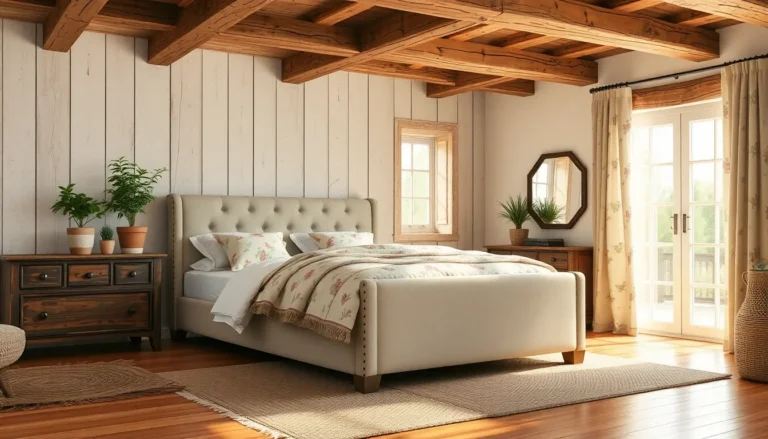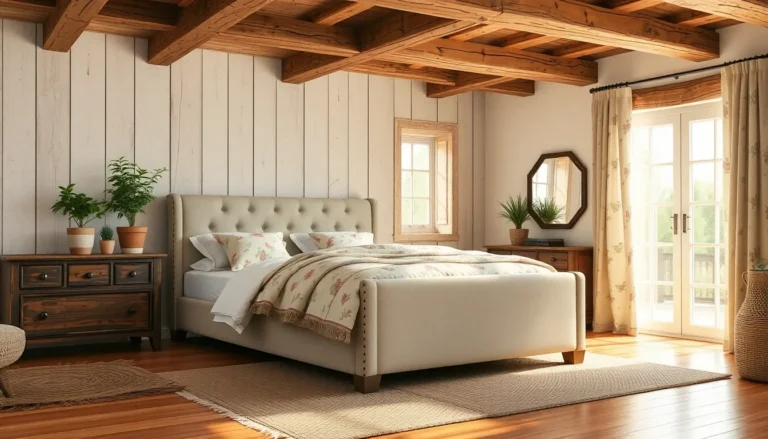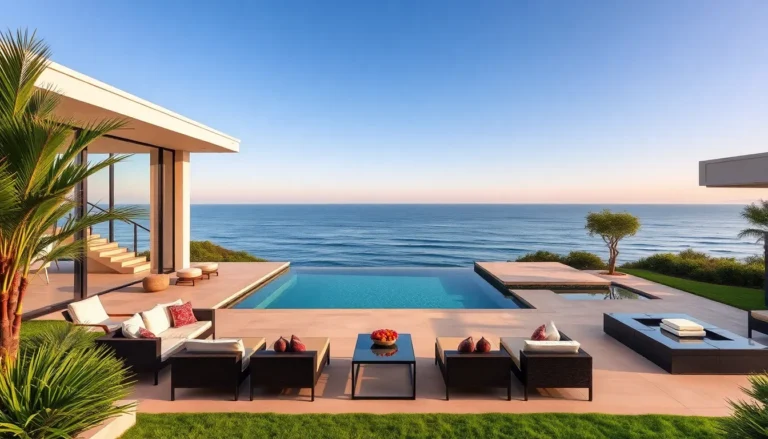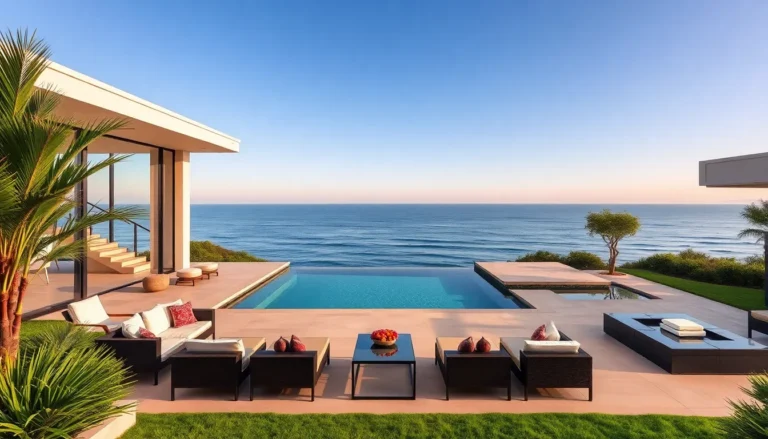Table of Contents
ToggleIn a world where cookie-cutter homes dominate the landscape, luxury home architecture stands out like a diamond in a pile of pebbles. These stunning residences aren’t just places to live; they’re masterpieces that reflect the owner’s personality and aspirations. Imagine walking into a home where every corner whispers sophistication and every room tells a story—sounds dreamy, right?
Overview of Luxury Homes Architecture
Luxury homes architecture stands apart from standard home designs. These structures serve not just as residences, but also as reflections of personal identity and aspirations. A variety of architectural styles contribute to this uniqueness, including modern, contemporary, Mediterranean, and traditional designs. Each style showcases specific elements, allowing homeowners to express their individual tastes.
Attention to detail defines luxury architecture. High-end materials like marble, granite, and premium wood elevate the aesthetic and functionality of homes. Custom features such as high ceilings, expansive windows, and open floor plans create an airy atmosphere, enhancing the luxurious experience.
Innovative design often includes smart home technology. Automated lighting, climate control, and advanced security systems offer convenience and peace of mind. These systems integrate seamlessly, promoting an effortless lifestyle.
Outdoor spaces frequently reflect the luxury ethos. Swimming pools, landscaped gardens, and outdoor kitchens extend living areas and provide relaxation points. These outdoor features often complement the interior while enhancing leisure and entertainment options.
Luxury homes often feature sustainability in design as well. Energy-efficient systems, green roofs, and sustainable materials not only reduce environmental impact but also appeal to eco-conscious buyers. This focus on sustainability shapes the future of luxury living.
Luxury homes architecture represents a convergence of art, technology, and personal expression. Each design choice embodies the homeowners’ lifestyles, prioritizing comfort, style, and conscious living. Attention to every aspect underscores the artistic nature of these exquisite residences.
Key Features of Luxury Homes

Luxury homes stand out due to their distinctive features, showcasing architectural brilliance and unparalleled craftsmanship. These properties often embody innovative design and high-quality materials, creating an unmatched living experience.
Innovative Design Elements
Unique design elements characterize luxury homes, emphasizing both aesthetics and utility. Homes typically feature expansive open floor plans, allowing for seamless flow between spaces. Large windows promote natural light and connect indoor and outdoor environments. Custom layouts often include multifunctional spaces, enabling flexibility for different lifestyles. Smart technology is routinely integrated, managing aspects like lighting and security effortlessly. Outdoor living areas expand the usable space, including intricately designed patios and pools. These elements not only elevate the overall appeal but also cater to contemporary living expectations.
High-Quality Materials
High-quality materials define luxury homes, significantly enhancing their appeal and durability. Use of premium woods, natural stones, and specialized finishes is common, contributing to an exquisite ambiance. Interiors frequently showcase marble countertops, hardwood floors, and designer fixtures, all promoting elegance. Energy-efficient systems integrate seamlessly while maintaining aesthetic value. Consideration for sustainability influences material choices, favoring eco-friendly options. The combination of these high-end materials results in both beauty and longevity, setting luxury homes apart from conventional residences.
Popular Architectural Styles
Luxury homes exhibit a range of architectural styles that enhance their unique appeal. These styles reflect various design philosophies and personal preferences, making each residence distinct.
Contemporary Luxury Homes
Contemporary luxury homes emphasize clean lines and open spaces. Large windows often dominate the design, inviting natural light and creating a seamless connection with the outdoors. Innovative materials like glass, steel, and concrete frequently appear, offering a modern aesthetic. Flexible layouts promote fluid movement between areas, resulting in an airy and spacious feel. Sustainable practices often integrate into these homes, with energy-efficient systems and eco-friendly features appealing to environmentally conscious homeowners.
Classic Luxury Estates
Classic luxury estates exude timeless elegance through traditional designs. Architectural features like grand columns, intricate molding, and symmetrical facades define this style. High ceilings create a sense of grandeur, while expansive rooms ensure comfortable living. Natural materials such as stone and wood enhance durability and sophistication. Detailed landscaping complements these estates, often featuring manicured gardens and elegant pathways. Homeowners invest in custom features, ensuring each estate reflects their individual tastes and lifestyles.
Sustainable Practices in Luxury Architecture
Sustainability shapes the landscape of luxury architecture. Energy-efficient systems serve as the backbone of these designs, ensuring minimal environmental impact. Eco-friendly materials, such as reclaimed wood and recycled steel, embody both elegance and responsibility. High-performance insulation keeps homes comfortable while reducing energy consumption.
Luxury homes often incorporate solar panels to harness renewable energy. This not only reduces utility costs but also aligns with contemporary values of sustainability. Smart home technology plays a role in managing energy usage, adjusting heating and cooling based on occupancy. Homeowners appreciate the ease of monitoring energy consumption through their devices.
Water-efficient fixtures find a prominent place in luxury designs. Advanced irrigation systems help maintain lush landscapes without excessive water waste. Rainwater harvesting systems become common features, providing a sustainable water source for gardens and irrigation.
Landscaping adopts sustainable practices as well. Native plants reduce the need for irrigation and pesticides, fostering biodiversity. Outdoor spaces often include permeable paving, allowing water to infiltrate rather than run off, thus minimizing flood risks.
Architects emphasize passive design principles to maximize natural light and ventilation. Strategic window placement enhances airflow, improving indoor comfort without relying heavily on HVAC systems. This approach not only emphasizes aesthetics but also promotes a healthier living environment.
Sustainability in luxury architecture represents a commitment to both style and responsibility. Buyers increasingly seek homes that reflect their values, marrying exquisite design with environmental stewardship. This trend redefines luxury, making sustainability a vital aspect of modern living spaces.
Luxury home architecture embodies a unique blend of artistry and functionality. Each residence is a canvas reflecting personal style and modern aspirations. With a focus on innovative design and sustainable practices, these homes are not just places to live but statements of lifestyle and values.
As homeowners seek to balance elegance with environmental consciousness, the evolution of luxury architecture continues to inspire. The integration of smart technology and eco-friendly materials highlights a commitment to creating spaces that are both beautiful and responsible. Ultimately, luxury homes serve as a testament to the ever-changing landscape of design, where comfort meets sophistication in perfect harmony.
